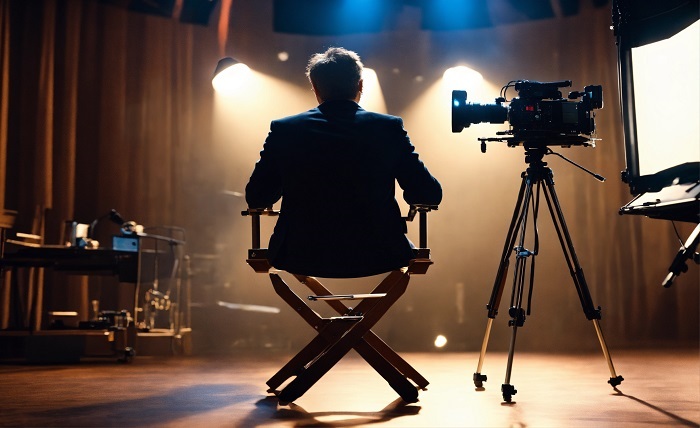
Introduction
Movie roles are the cornerstone of the film industry, transforming scripts into memorable stories that captivate audiences worldwide. From heartwarming protagonists to complex antagonists, every movie role adds depth and dimension to the narrative. In this blog, we explore the significance of movie roles, their evolution over time, and what it takes for actors to bring them to life. Whether you’re an aspiring actor or a movie buff, understanding the intricacies of movie roles will deepen your appreciation for the art of filmmaking.
The Evolution of Movie Roles in Cinema
Movie roles have evolved dramatically since the inception of cinema. In the early days of silent films, actors relied heavily on exaggerated expressions and body language to communicate their characters. As technology advanced, so did the complexity of movie roles, allowing for more nuanced performances. Today, actors immerse themselves in diverse and challenging movie roles, from period dramas to futuristic sci-fi adventures. This evolution reflects not only advancements in filmmaking but also changes in societal norms and storytelling preferences.
Types of Movie Roles: Protagonists, Antagonists, and Beyond
Movie roles can be categorized into several types, each serving a unique purpose within the story. Protagonists drive the narrative forward, while antagonists provide the conflict that keeps audiences engaged. Supporting characters, love interests, and comedic relief add layers to the story. Even minor movie roles can leave a lasting impact when portrayed skillfully. Each type of role requires a different set of skills, making it essential for actors to understand their character’s place in the story.
The Art of Preparing for Movie Roles
Preparing for movie roles is a meticulous process that requires dedication and creativity. Actors often immerse themselves in their characters by researching the era, culture, or profession their role represents. Method acting, script analysis, and character backstory creation are common techniques used to bring authenticity to movie roles. For instance, Daniel Day-Lewis famously stayed in character off-camera while preparing for his iconic movie roles. This level of commitment ensures that every performance resonates with the audience.
Iconic Movie Roles That Shaped Cinema
Some movie roles transcend the screen and become cultural phenomena. Think of Marlon Brando’s role in The Godfather, Heath Ledger’s Joker in The Dark Knight, or Meryl Streep’s Miranda Priestly in The Devil Wears Prada. These iconic movie roles have not only defined the careers of their actors but also influenced generations of filmmakers and audiences. Analyzing such roles reveals the power of storytelling and the enduring impact of a well-executed performance.
Challenges Faced by Actors in Portraying Movie Roles
Portraying movie roles is not without its challenges. Actors often face physical and emotional demands, such as drastic weight changes, intense action sequences, or exploring psychologically taxing characters. Additionally, some movie roles require actors to master new skills, such as learning a language, playing an instrument, or performing stunts. Balancing these challenges while staying true to the character’s essence is a testament to the actor’s craft and resilience.
The Role of Directors and Writers in Shaping Movie Roles
Directors and writers play a pivotal role in shaping movie roles. A well-written script lays the foundation for compelling characters, while a director’s vision brings them to life on screen. Collaboration between actors, directors, and writers is crucial to ensure that movie roles align with the story’s overall tone and message. Iconic directors like Alfred Hitchcock and Christopher Nolan are known for creating unforgettable movie roles through their unique storytelling approaches.
The Future of Movie Roles in a Changing Industry
The film industry is constantly evolving, and so are movie roles. With the rise of streaming platforms, actors now have more opportunities to explore unconventional and diverse roles. Representation and inclusivity are becoming central to casting decisions, resulting in more authentic and relatable movie roles. Additionally, advancements in technology, such as CGI and motion capture, are pushing the boundaries of what’s possible in portraying characters. The future of movie roles promises even greater innovation and creativity.
Conclusion
Movie roles are the heart and soul of cinema, bridging the gap between storytelling and performance. From their historical evolution to the challenges actors face in bringing them to life, every aspect of movie roles contributes to the magic of filmmaking. As the industry continues to grow, movie roles will remain a vital part of our cultural narrative, inspiring audiences and shaping the future of storytelling.
FAQs
1. What is the most challenging aspect of preparing for movie roles?
The most challenging aspect often depends on the role itself. Some actors find the emotional depth required for certain movie roles demanding, while others struggle with physical transformations or mastering new skills.
2. How do actors choose their movie roles?
Actors typically consider factors such as the script, the director’s vision, and the potential impact of the role on their career. Many also look for movie roles that challenge them creatively or allow them to explore new genres.
3. Why are some movie roles considered iconic?
Iconic movie roles resonate with audiences on a deeper level due to their compelling portrayal, cultural significance, or influence on the film industry. These roles often showcase the actor’s talent and leave a lasting legacy.







